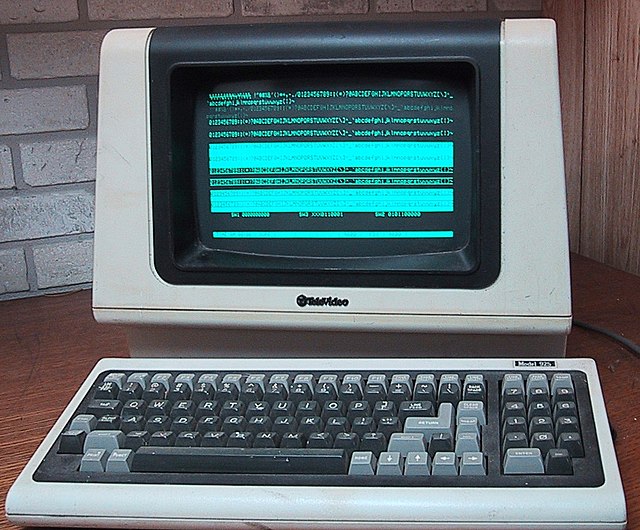X.25 is an ITU-T standard protocol suite for packet-switched data communication in wide area networks (WAN). It was originally defined by the International Telegraph and Telephone Consultative Committee in a series of drafts and finalized in a publication known as The Orange Book in 1976.
Representatives of PTTs and private companies who championed the development of X.25-based networks and services in Europe, North America and Japan. Photographed at the CCITT Rapporteur-group meeting of March 1975 in Ottawa, where they drafted the first X.25 proposal.
A Televideo terminal model 925 made around 1982
An X.25 modem once used to connect to the German Datex-P network
In telecommunications, packet switching is a method of grouping data into packets that are transmitted over a digital network. Packets are made of a header and a payload. Data in the header is used by networking hardware to direct the packet to its destination, where the payload is extracted and used by an operating system, application software, or higher layer protocols. Packet switching is the primary basis for data communications in computer networks worldwide.
CCITT SGVII X25 Advocates
NSFNET Traffic 1991, NSFNET backbone nodes are shown at the top, regional networks below, traffic volume is depicted from purple (zero bytes) to white (100 billion bytes), visualization by NCSA using traffic data provided by the Merit Network.
Image: Paul Baran 2





